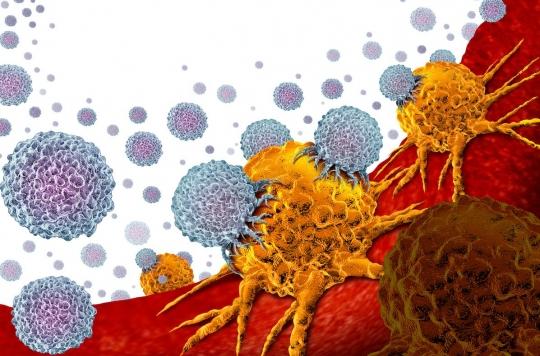Understanding the mechanism of virus detection by cells opens up great prospects for the treatment of many pathologies such as cancer, autoimmune or inflammatory diseases.

- The nucleosomes inside our cells prevent cGAS from inadvertently triggering the body’s innate immune response to our own DNA.
- Cryo-electron microscopy that allows scientists, like those in our team, to observe the protein machinery inside our cells with unprecedented clarity
- The researchers succeeded in determining the structure of cGAS in complex with the nucleosome.
This is a discovery that could lead to great advances in the treatment of many diseases. The mechanism for detecting an infection by the cells has been uncovered by researchers. They shed light on the role of a key DNA detection protein in the immune system, while it is linked to the nucleosome: cGAS. The results of this study were published on September 10 in the journal Science.
A new technology behind the discovery
This study reveals in detail how nucleosomes inside our cells prevent cGAS from inadvertently triggering the body’s innate immune response to our own DNA. “Detection and response to foreign DNA from bacterial and viral pathogens is one of the most fundamental mechanisms for host defensedescribes Qi Zhang, co-lead author of the study. A deeper understanding of the functions and regulations of this important DNA sensor will have profound impacts on both basic research and the translational development of cGAS-targeted therapies crucial for improving human health..”
This discovery was possible thanks to the development of technology, in particular of “cryo-electron microscopy which allows scientists, like those in our team, to observe the protein machinery inside our cells with unprecedented claritysays Robert McGinty, the other co-author of the study. By seeing how these proteins normally work, we can gain insight into how to manipulate their functions to treat disease..”
Protein-protein interactions
In our immune system, the cGAS protein has the role of detecting foreign DNA, viruses. During DNA detection, cGAS synthesizes cyclic GMP-AMP (cGAMP), the second messenger molecule that activates the cGAS-STING signaling pathway to fight against, in particular, infections, inflammatory diseases and cancers. . Since cGAS is a universal DNA sensor, it must be regulated to differentiate pathogenic DNA from the body’s own healthy DNA to avoid any inadvertent immune response. Previous research has shown that cGAS is enriched inside the nucleus where our genomic DNA is stored without knowing how because cGAS ignores our own healthy DNA.
Thanks to cryo-electron microscopy technology, the researchers succeeded in determining the structure of cGAS in complex with the nucleosome. The structure shows that cGAS uses two amino acids to anchor to a negatively charged patch on the surface of the nucleosome. These protein-protein interactions allow the nucleosome to occupy a foreign DNA-sensing surface on the cGAS and prevent the cGAS from entering its functionally active DNA-bound state. “These findings reshape the current paradigm of cGAS regulation and illustrate the role of the nucleosome in regulating various protein functions.”, described Robert McGinty.
.















